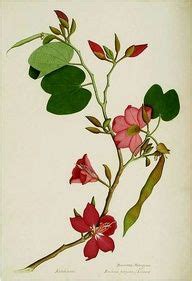
Scientific Name: Bauhinia variegata
Family Name: Caesalpinaceae
Order Name: Fabales
Kingdom: Plantae
Genus: Bauhinia
Species: B. variegata
Kanchanara
Published Date: 6/17/2023 5:59:15 AM
What is Kanchanara :
- Kanchanara is an ayurvedic herb used for treating hypothyroidism, piles, diabetes, improving metabolism, and acne.
- It is a moderate-sized deciduous tree with greyish-colored stems found in the Sub-Himalayan tract from the Indus eastwards and throughout the forests of India and Burma.
- It is one of the major ingredients of much important ayurvedic medicine like Kanchanara Guggulu, Kanchan gutika, Gandamala Kundan rasa, Gulkand Kanchanara, Kanchanaradi Kwatha, Usirasava, Chandanasava, Kanchanara Varuna Kwatha.
- It is also known as "Mountain Ebony" or "Rakta Kanchan" or "Camel's Foot" or "Yugapatraka" (Leaves are split at the tip dividing the leaf into two halves).
- It contains important chemical compositions such as hentriacontane, octacosanol, b-sitasterol, stigmasterol, lupeol, and amino acids.
Availability:
- All parts of the plant (leaves, flower buds, flower, stem, stem bark, seeds, and roots) possess medicinal properties. Among these flowers and bark of Kanchanara are used as medicine. It is available in powder, tablet, and capsule form.
What are its benefits:
- Hypothyroidism is a condition in which the thyroid gland does not produce a sufficient amount of thyroid hormones. According to Ayurveda, the initial causes of Hypothyroidism are diet and lifestyle factors that imbalance the digestive fire and metabolism and disrupt the balance of the Tridoshas ("Vata", "Pitta", "Kapha"). "Kachnara" improves the digestive fire which corrects the metabolism and also helps to balance Tridosha due to its "Deepan" (appetizer) and "Tridosha" balancing property.
- Piles, known as "Arsh" in Ayurveda, are caused by an unhealthy diet and a sedentary lifestyle. This leads to the impairment of all the three doshas, mainly "Vata". An aggravated "Vata" leads to low digestive fire, leading to constipation. If ignored or left untreated, this causes swelling in the veins in the rectum area leading to the formation of Piles mass. "Kanchanara" helps to improve the digestive fire because of its "Deepan" (appetizer) property, thereby preventing constipation and also helps to reduce swelling of the Piles mass.
- Kanchanara leaves are beneficial in managing diabetes by reducing blood glucose levels and improving lipid profile due to the presence of antioxidants.
- Kanchanara stem might help manage weight by improving metabolism.
- In fever "Jwara", a decoction made with stem bark of Kanchanara is useful.
- Kanchanara helps in wound-healing by inducing the formation of new skin cells due to its anti-inflammatory and antioxidant properties. Boiled water of Kanchanara helps can be used to promote wound healing and reduce inflammation due to its "Ropan" (healing) and "Sita" (Cold) properties.
- Applying Kanchanara powder mixed with honey helps manage skin problems such as acne, pimples due to its "Vranahara", "Sita" (cold), and "Kashaya" (astringent) properties. The stem bark of Kanchanara is dried and powdered well. It is then mixed with ghee and applied over the skin.
Ayurvedic Properties:
- "Guna" (qualities) - "Laghu" (light to digest), "Rooksha" (dryness)
- "Rasa" (taste) - "Kashaya" (Astringent)
- "Vipaka" - taste conversion after digestion - "Katu" (pungent)
- "Veerya" - "Sheeta" - Cold potency.
- "Swasahara" - It relieves asthma.
- "Gandamala nashana" - It is useful in Goitre, cervical lymphadenitis, thyroid complications. A decoction is prepared with Kanchanara and Zingiber officinale powder. It is then taken at a dose of 60 ml twice per day.
- Effect on Tridosha - "Kapha Pitta hara": It alleviates "Kapha" and "Pitta" doshas.
- "Krumighna" - It relieves worm infestation. A decoction made with stem barks of Kanchanara is taken internally at a dose of 60 ml.
- "Kushtaghna" - It relieves skin diseases.
- "Gudabhramsha" - It is useful in the treatment of rectal prolapsed.
- "Pittasra" - It is useful in bleeding disorders.
- "Pradara" - It is useful in menorrhagia (heavy menstrual bleeding).
- "Kasahara" - It is useful in cough and cold. Freshly collected bark of Kanchanara is made into a decoction by adding 4 times water. It is then orally.
- Kanchanar Guggulu: It is one of the efficient Ayurvedic herbal medicine, Reference is found in "Bhaishajya Ratnavali" (44th chapter). Kanchanar Guggulu is an effective Ayurvedic remedy for treating hypothyroidism, hormonal imbalance, PCOS, and joint pains.
Ingredients of Kanchanar Guggulu:
- "Kanchanara" – Bauhinia variegata L. – Bark – 240 g
"Shunti" – Ginger – Zingiber officinale – Rhizome – 48 g
"Maricha" – Black pepper – Piper nigrum – Fruit – 48 g
"Pippali" – Long pepper – Piper longum Linn – Fruit – 48 g
"Haritaki" – Terminalia chebula Retz – Fruit Rind – 24 g
"Vibhitaki" – Terminalia bellerica– Fruit Rind – 24 g
"Amalaki" – Emblica officinalis – Fruit – 24 g
"Varuna" – Crataeva nurvala – Bark – 12 g
"Ela" (Elaichi) – Cardamom – Elettaria cardamomum – Fruit – 3 g
"Twak" (Dalchini) – Cinnamomum zeylanicum – Stem bark – 3 g
"Patra" (Tej Patra) – Cinnamomum tamala – Leaves – 3 g
"Guggulu" – Commiphora mukul (Guggulu Resin) – equal to the number of above ingredients – 477 grams
Regional Name:
- Sanskrit: Kanchanara, Gandari, English: Camel's foot, Hindi: Kachanar, Gujrati: Chapmakati, Bengali: Kanchana, Telugu: Devakanchanamu, Kannada: Kempumandara, Malayalam: Koral, kanchan, Marathi: Raktakanchan, Tamil: Mandare